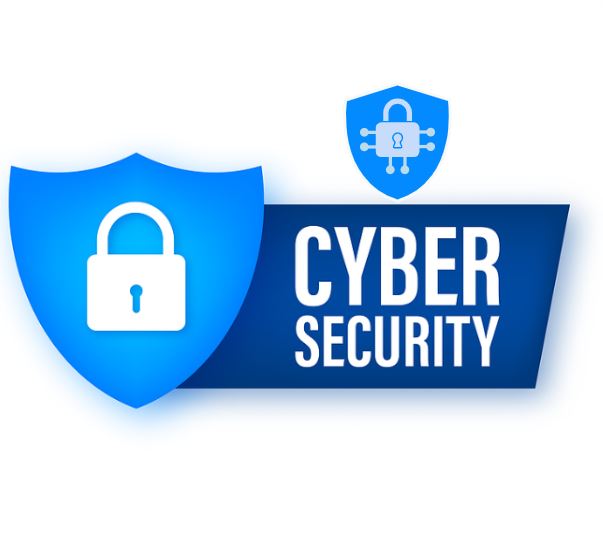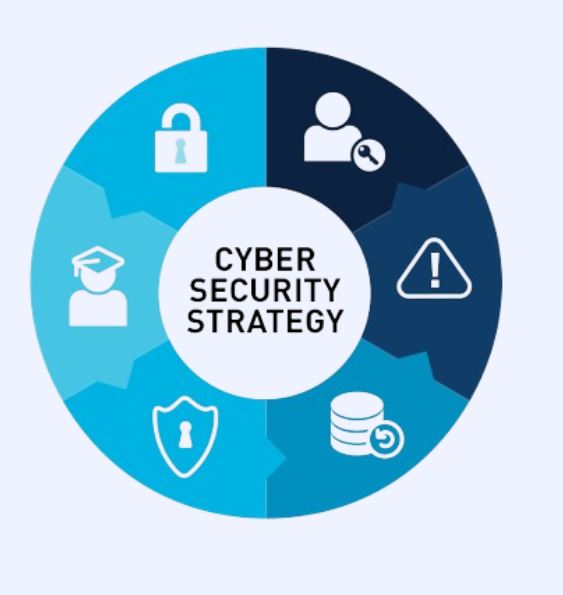What is Cyber Security?
Cybersecurity, or information security, is the practice of protecting computer systems, networks, and data from unauthorized access, attacks, damage, or theft. It involves implementing measures to ensure the confidentiality, integrity, and availability of information and computing resources.
The primary goal of cybersecurity is to safeguard sensitive data, prevent unauthorized access to systems, and mitigate the impact of cyber threats. Here covering the bellow idea
Key aspects of cybersecurity include
How to prevent cyber attacks or Threats
The Common types of cyber threats

What is Network Security ?
Network security refers to the set of measures and strategies implemented to protect computer networks, devices, and data from unauthorized access, attacks, and potential security threats. The primary goal of network security is to ensure the confidentiality, integrity, and availability of information within a network. It encompasses both hardware and software technologies, as well as administrative practices and policies designed to safeguard networks and the data they contain
Key aspects of cybersecurity
Cybersecurity is a dynamic and evolving field, as cyber threats continue to advance in sophistication. It requires a combination of technology, policies, and human awareness to create a robust defense against potential cyber risks. Professionals in this field work to stay ahead of emerging threats, adapt security measures, and continually improve the overall security of digital systems
The primary goal of cybersecurity is to safeguard sensitive data, prevent unauthorized access to systems, and mitigate the impact of cyber threats.
Key aspects of cybersecurity include:
Confidentiality: Ensuring that only authorized individuals or systems have access to sensitive information.
Integrity: Maintaining the accuracy and reliability of data by preventing unauthorized modification or tampering.
Availability: Ensuring that systems and data are accessible and usable when needed, and protecting against disruptions or downtime.
Authentication: Verifying the identity of users or systems to ensure that only authorized entities have access to resources.
Authorization: Granting appropriate permissions and access rights to authenticated users or systems based on their roles and responsibilities.
Firewalls and Intrusion Detection Systems (IDS): Implementing tools and technologies to monitor and control network traffic, detect and prevent unauthorized access or attacks.
Encryption: Protecting data by converting it into a secure format that can only be accessed by authorized parties with the appropriate decryption keys.
Security Policies and Procedures: Establishing guidelines, rules, and practices to govern the secure use of systems and data within an organization.
Incident Response and Recovery: Developing plans and procedures to address and recover from cybersecurity incidents, such as data breaches or cyberattacks.
Security Awareness Training: Educating users and employees about cybersecurity best practices to reduce the likelihood of human errors and improve overall security posture.
Common types of cyber threats
Cyber threats or cyberattacks encompass a wide range of malicious activities and tactics that aim to compromise the confidentiality, integrity, or availability of information and computer systems,
Types of cyber threats are
Malware: Malicious software designed to disrupt, damage, or gain unauthorized access to computer systems. Examples include viruses, worms, Trojans, ransomware, and spyware.
Phishing: A form of social engineering where attackers attempt to trick individuals into divulging sensitive information, such as usernames, passwords, or financial details, by posing as a trustworthy entity.
Denial of Service (DoS) and Distributed Denial of Service (DDoS) Attacks: These attacks aim to overwhelm a system, network, or website with excessive traffic, making it unavailable to legitimate users.
Man-in-the-Middle (MitM) Attacks: Attackers intercept and potentially alter communication between two parties without their knowledge. This can lead to the theft of sensitive information.
SQL Injection: Exploiting vulnerabilities in web applications to inject malicious SQL code into a database query, allowing attackers to manipulate or retrieve data.
Cross-Site Scripting (XSS): Injecting malicious scripts into web pages viewed by other users, potentially leading to the theft of information or unauthorized access.
Zero-Day Exploits: Attacks that target vulnerabilities in software or hardware that are not yet known to the vendor or for which no patch is available.
Advanced Persistent Threats (APTs): Coordinated and targeted attacks, often state-sponsored, that aim to gain unauthorized access to a system and remain undetected for an extended period to steal sensitive information.
IoT (Internet of Things) Vulnerabilities: Exploiting weaknesses in connected devices and IoT ecosystems to gain unauthorized access, manipulate data, or launch attacks on other systems.
Social Engineering: Manipulating individuals into divulging sensitive information or performing actions that may compromise security, often through psychological manipulation.
Insider Threats: Malicious activities or security breaches initiated by individuals within an organization, such as employees or contractors, who have privileged access.
Credential Stuffing: Using stolen or leaked usernames and passwords to gain unauthorized access to multiple accounts, exploiting the tendency of individuals to reuse login credentials.
Fileless Malware: Malicious code that operates in memory rather than on disk, making it more challenging to detect by traditional antivirus solutions.
Cryptojacking: Illegitimate use of a victim’s computing resources to mine cryptocurrencies without their knowledge or consent.
Staying informed about these threats, implementing security best practices, and employing a multi-layered defense strategy are crucial for organizations and individuals to protect themselves against the evolving landscape of cyber threats.
- Quis nostrud exercitation ullamco laboris nisi ut aliquip ex ea commodo consequat. Duis aute irure dolor in reprehenderit in voluptate.

Preventing cyber attacks and threats requires a comprehensive and proactive approach that involves a combination of technological measures, policies, and user education. Here are some key strategies to help prevent cyber attacks:
How to prevent cyber attacks or Threats
Keep Software and Systems Updated:
- Regularly update operating systems, software, and applications to patch known vulnerabilities.
- Enable automatic updates whenever possible to ensure that systems are protected against the latest threats.
Use Strong Authentication:
- Implement multi-factor authentication (MFA) to add an extra layer of security, requiring users to provide multiple forms of identification.
- Encourage the use of strong, unique passwords and consider the use of password managers.
Network Security:
- Use firewalls to monitor and control incoming and outgoing network traffic.
- Employ intrusion detection and prevention systems to identify and respond to suspicious activities on the network.
Implement Email Security Measures:
- Use email filtering solutions to detect and block phishing emails, malicious attachments, and suspicious links.
- Educate users on how to recognize and avoid phishing attempts.
Regularly Back Up Data:
- Perform regular backups of critical data and ensure that backup processes are tested and reliable.
- Store backups in a secure and isolated location to prevent them from being compromised in the event of an attack.
Endpoint Security:
- Use antivirus and anti-malware software on all devices to detect and remove malicious software.
- Employ endpoint detection and response (EDR) solutions to monitor and respond to security incidents on individual devices.
Limit User Privileges:
- Follow the principle of least privilege, granting users the minimum level of access required to perform their job functions.
- Regularly review and update user access permissions.
Encrypt Sensitive Data & Incident Response :
- Use encryption to protect sensitive data, both in transit and at rest.
- Implement secure communication protocols, such as HTTPS, to protect data during transmission.
Monitor Network Activities:
- Implement robust monitoring solutions to detect unusual or suspicious activities on the network.
- Establish baselines for normal network behavior to identify deviations that may indicate an attack.

What Is a Cyber Security Strategy?
A cybersecurity strategy is a comprehensive plan that outlines an organization’s approach to managing and mitigating cybersecurity risks. It serves as a roadmap for protecting an organization’s information systems, networks, data, and sensitive information from cyber threats.
Secure Your Business
A well-implemented cybersecurity strategy helps organizations build resilience against cyber threats, protect sensitive information, and maintain the trust of customers, partners, and stakeholders.


